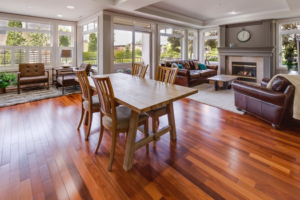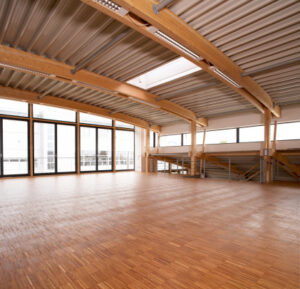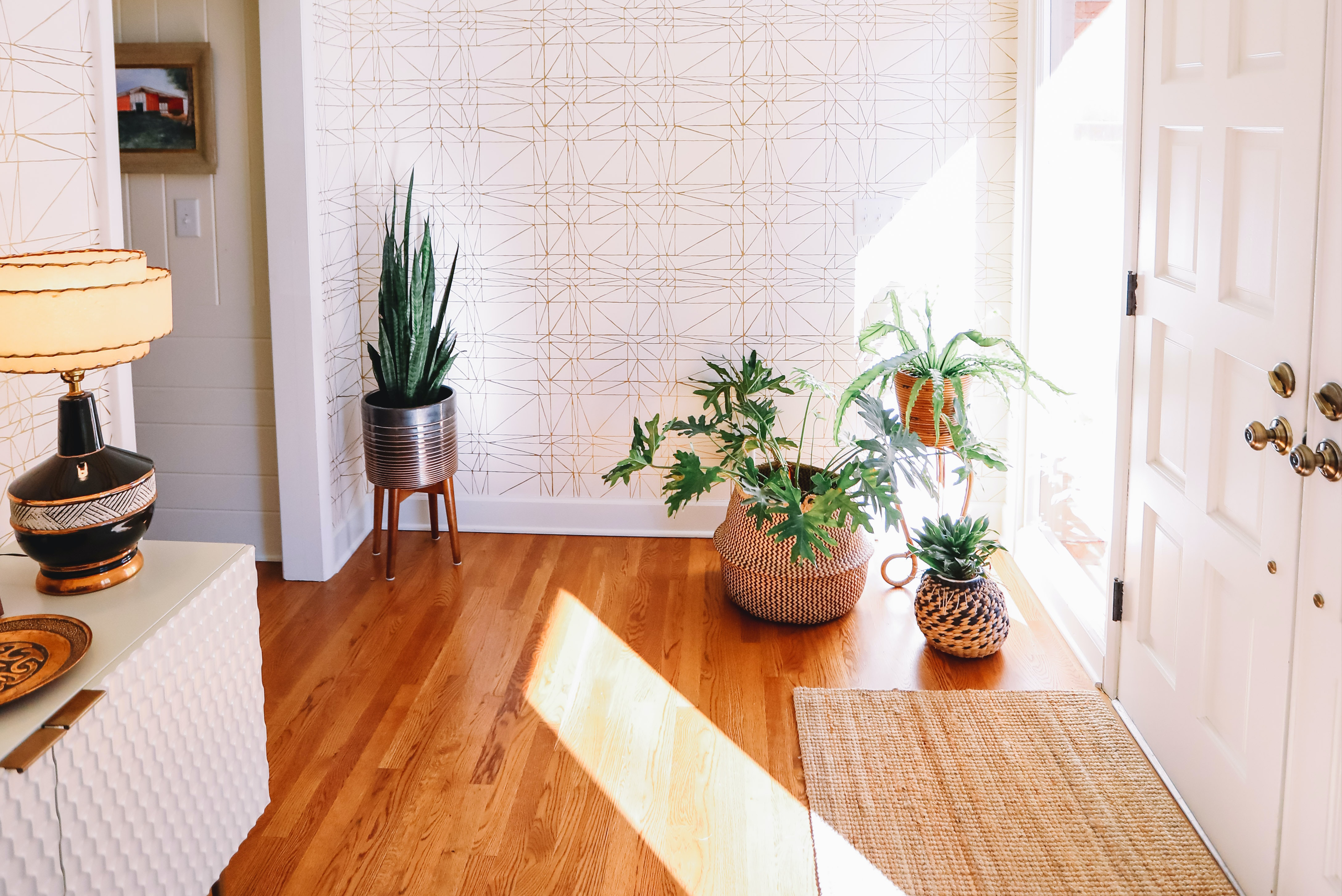Wood flooring is a popular choice for flooring in many homes. Several types of wood flooring are available, and each type has its own advantages and disadvantages.
This blog post will discuss the pros and cons of the four most common types of wood flooring: solid wood, engineered wood, laminate, and vinyl. We will also provide tips on how to choose the best type of wood flooring for your home.
Engineered Wood Flooring
Engineered wood flooring is a type of composite flooring that consists of a thin layer of real wood veneer atop a base of either plywood or High-Density Fiberboard (HDF). Engineered wood flooring is available in a wide variety of colours, styles, and finishes, making it a versatile choice for both homes and businesses.
Engineered wood flooring is also more durable than traditional hardwood floors, and it can be installed over a variety of subfloors, including concrete, OSB, and plywood. Due to its many benefits, engineered wood flooring has become one of the most popular types of hardwood floors on the market today.
Advantages of Engineered Wood Flooring:
Engineered wood flooring has many advantages over natural wood flooring;
- Engineered wood is more dimensionally stable, meaning it is less likely to warp or cup.
- Engineered wood is also less susceptible to changes in temperature and humidity.
- Engineered wood flooring can be installed over a variety of subfloors, including concrete, plywood, and OSB.
- Engineered wood can be glued down, stapled down, or floated over an existing floor.
- Engineered wood flooring comes in a variety of colours and finishes, making it a versatile choice for any home.
- Engineered wood floors are also easy to care for and maintain with proper care, an engineered wood floor will last for many years.
Disadvantages of Engineered Wood Flooring:
Engineered wood flooring has many advantages over solid wood floors, including increased stability and resistance to warping, however, there are also several disadvantages to engineered wood flooring that should be considered before making a final decision;
- One of the biggest disadvantages of engineered wood flooring is that it cannot be sanded as often as solid wood floors. This means that once an engineered wood floor shows signs of wear, it will need to be replaced sooner than a solid wood floor.
- Engineered wood floors are also more susceptible to damage from moisture than solid wood floors. This means that they are not the best choice for rooms that tend to be damp, such as basements or bathrooms.
- Finally, engineered wood floors are often more expensive than solid wood floors, making them less affordable for some homeowners.
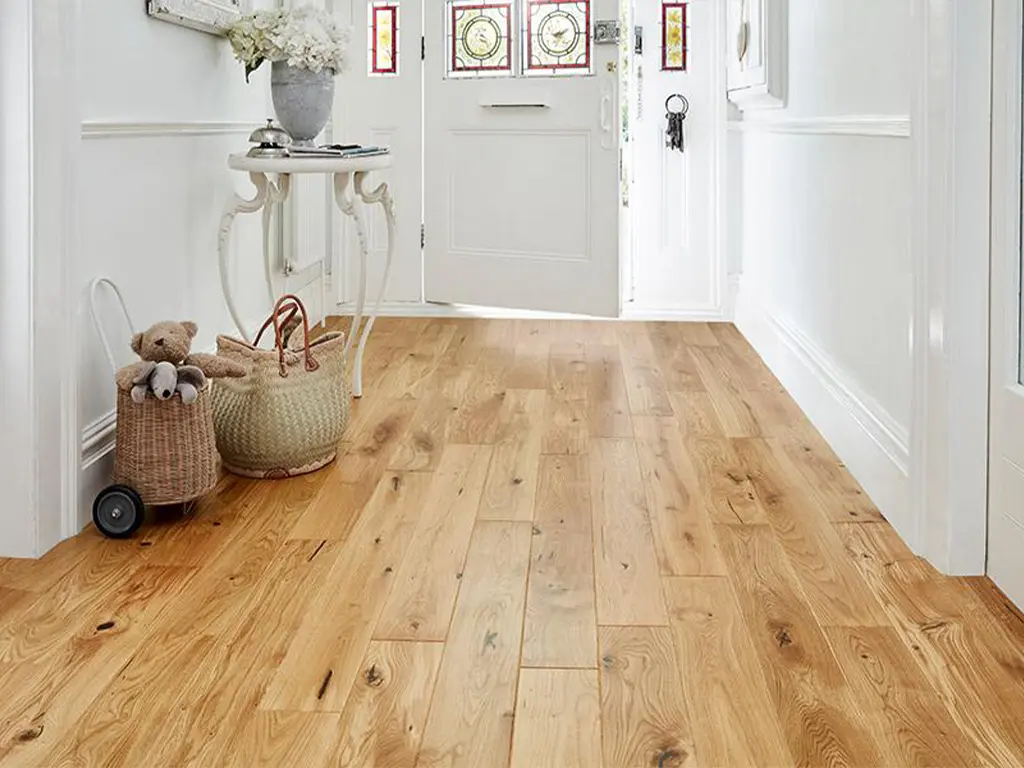
Solid Wood Flooring
Solid wood flooring is made from a single piece of wood, making it an incredibly strong and durable option for your home, because it is made from natural materials, solid wood flooring is also environmentally friendly.
Solid wood flooring is available in a variety of colours and styles to match any décor, and it can be sanded and refinished multiple times over its lifetime. Solid wood flooring is a great choice for high-traffic areas, as it can withstand a lot of wear and tear. If you are looking for an elegant and timeless flooring option, solid wood flooring is the way to go.
Advantages Of Solid Wood Flooring:
- Solid wood floors are environmentally friendly because they are made from natural materials.
- Solid wood floors are very strong and durable and can withstand a lot of wear and tear.
- Solid wood floors can be sanded and refinished multiple times over their lifetime.
- Solid wood floors are available in a wide variety of styles and colours to match any décor.
Disadvantages Of Solid Wood Flooring
- Solid wood floors are more expensive than engineered wood floors.
- Solid wood floors can be damaged by moisture and are not suitable for rooms that are damp or have high humidity levels.
- Solid wood floors can be scratched or dented by heavy furniture or pet nails.
- Solid wood floors require more maintenance than engineered wood floors.
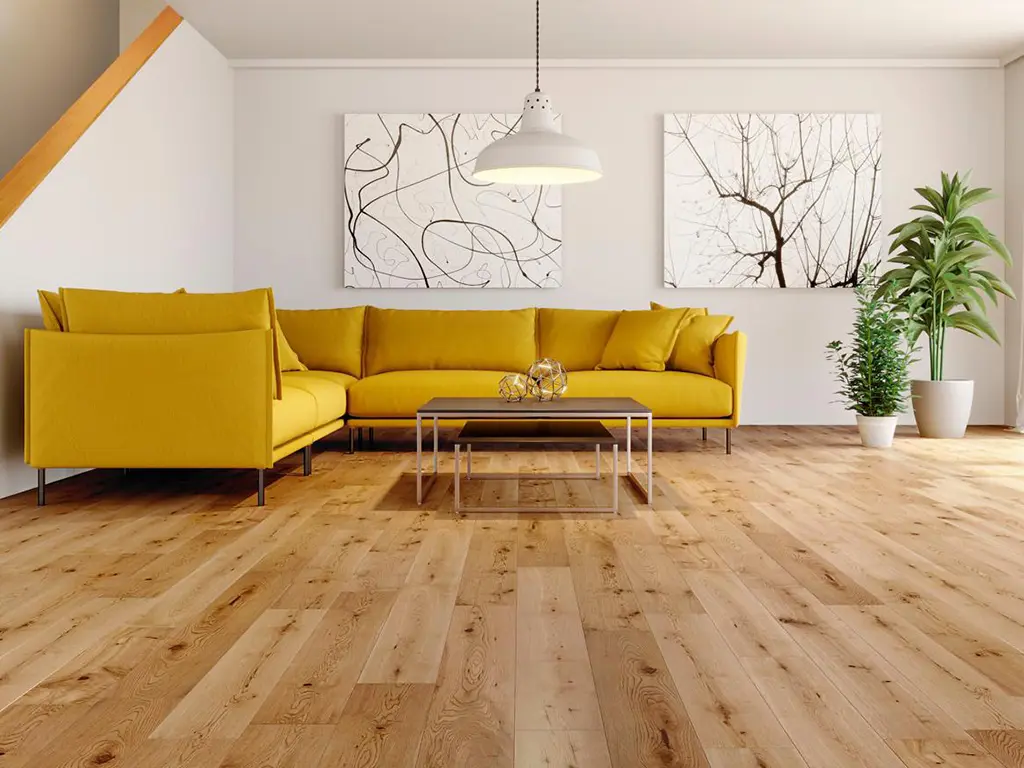
Laminate Wood Flooring
Laminate floors are made by combining layers of materials, including a wear-resistant top layer, a decorative middle layer, and a stable bottom layer. Laminate floors can mimic the look of hardwood floors, but they are much more resistant to scratches and dents.
Laminate floors are also easy to clean; simply sweeping or vacuuming regularly will help to keep them looking like new. Laminate wood flooring is an excellent choice for busy families or anyone who wants the beauty of hardwood floors without the hassle of maintenance.
Advantages of Laminate Wood Flooring:
- Laminate floors are much more resistant to scratches and dents than hardwood floors.
- Laminate floors are easy to clean; simply sweeping or vacuuming regularly will help to keep them looking like new.
- Laminate wood flooring is an excellent choice for busy families or anyone who wants the beauty of hardwood floors without the hassle of maintenance.
- Laminate floors are available in a wide variety of colours and styles to match any décor.
Disadvantages of Laminate Wood Flooring:
- Laminate floors cannot be sanded or refinished like hardwood floors.
- Laminate floors can be damaged by moisture and are not suitable for rooms that are damp or have high humidity levels.
- Laminate floors can be scratched or dented by heavy furniture or pet nails.
- Some people believe that laminate floors do not have the same “quality” look as hardwood floors.
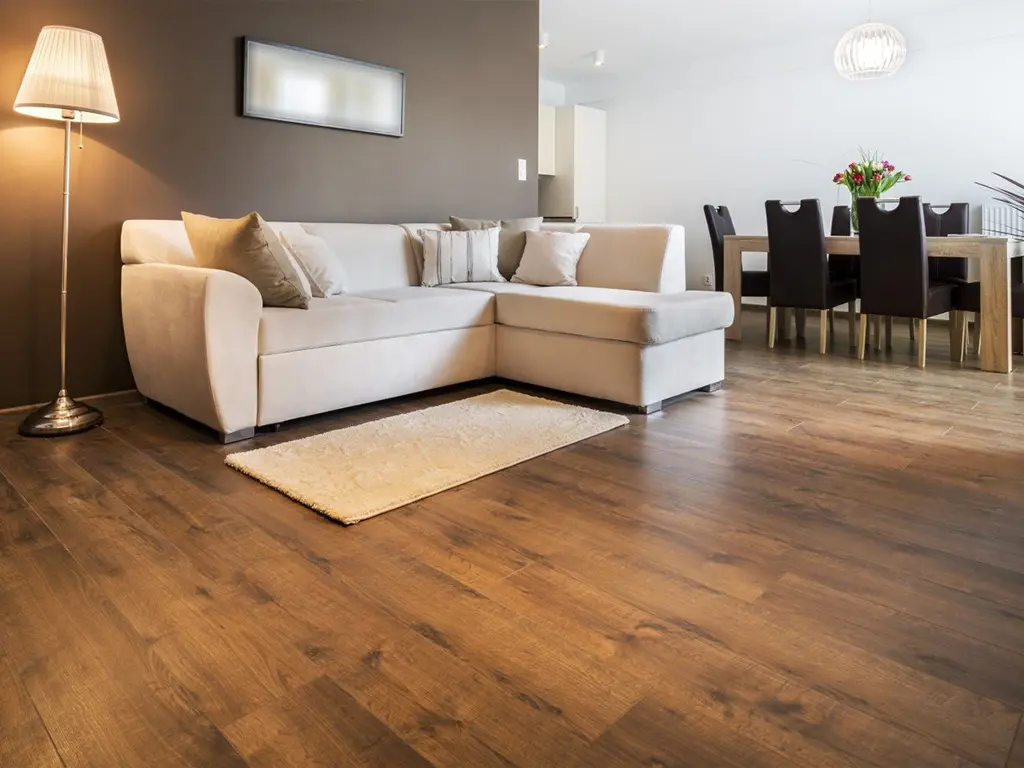
Wood Effect Vinyl Flooring (LVT)
LVT flooring is a type of vinyl flooring that has the look of wood but is more durable and easier to maintain. LVT floors are made by combining layers of materials, including a wear-resistant top layer, a decorative middle layer, and a stable bottom layer.
Advantages of Wood Effect Vinyl Flooring:
- LVT floors are much more resistant to scratches and dents than hardwood floors.
- LVT floors are easy to clean; simply sweeping or vacuuming regularly will help to keep them looking like new.
- LVT floors are an excellent choice for busy families or anyone who wants the beauty of hardwood floors without the hassle of maintenance.
- LVT floors are available in a wide variety of colours and styles to match any décor.
Disadvantages of Wood Effect Vinyl Flooring:
- LVT floors cannot be sanded or refinished like hardwood floors.
- LVT floors can be damaged by moisture and are not suitable for rooms that are damp or have high humidity levels.
- LVT floors can be scratched or dented by heavy furniture or pet nails.
- Some people believe that LVT floors do not have the same “quality” look as hardwood floors.
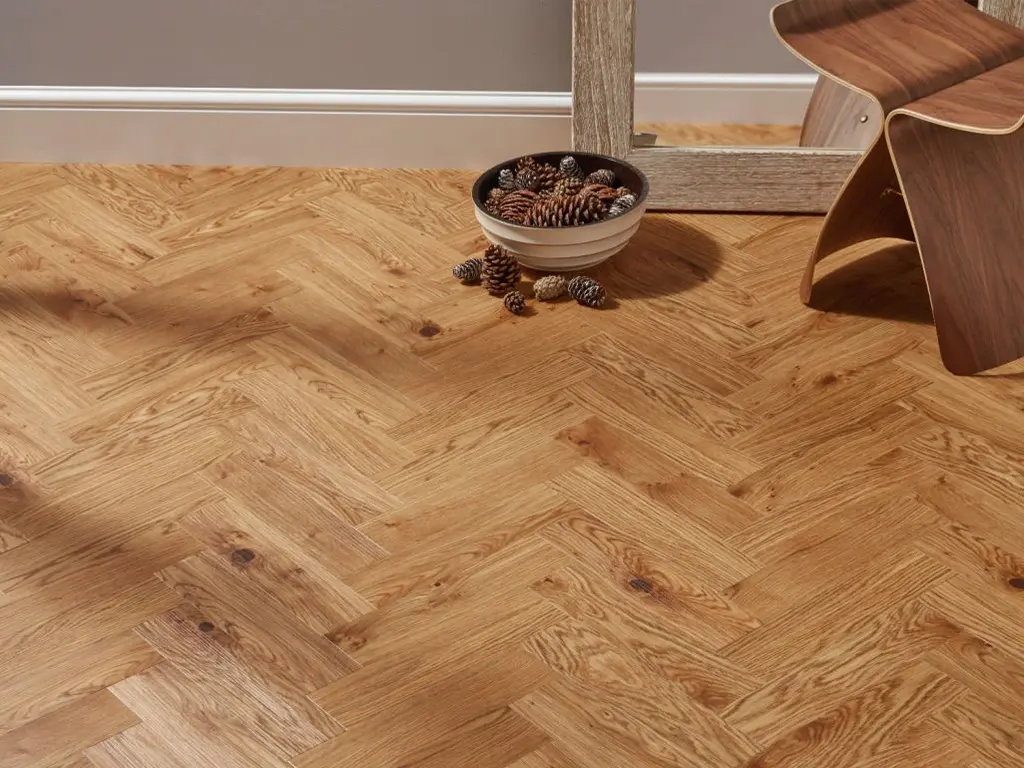
Conclusion
There is no “best” type of wood flooring; the best type of flooring for you will depend on your budget, needs, and personal preferences.
If you are looking for a durable and easy-to-maintain floor that will withstand a lot of wear and tear, laminate or LVT floors may be the best choice for you.
If you are willing to pay more for a floor that can be sanded and refinished, solid hardwood floors may be the best choice for you.
If you have any questions or want to learn more about our wood flooring in Bristol or any of our flooring services, please contact us today! We would be happy to help you choose the right type of flooring for your business.

